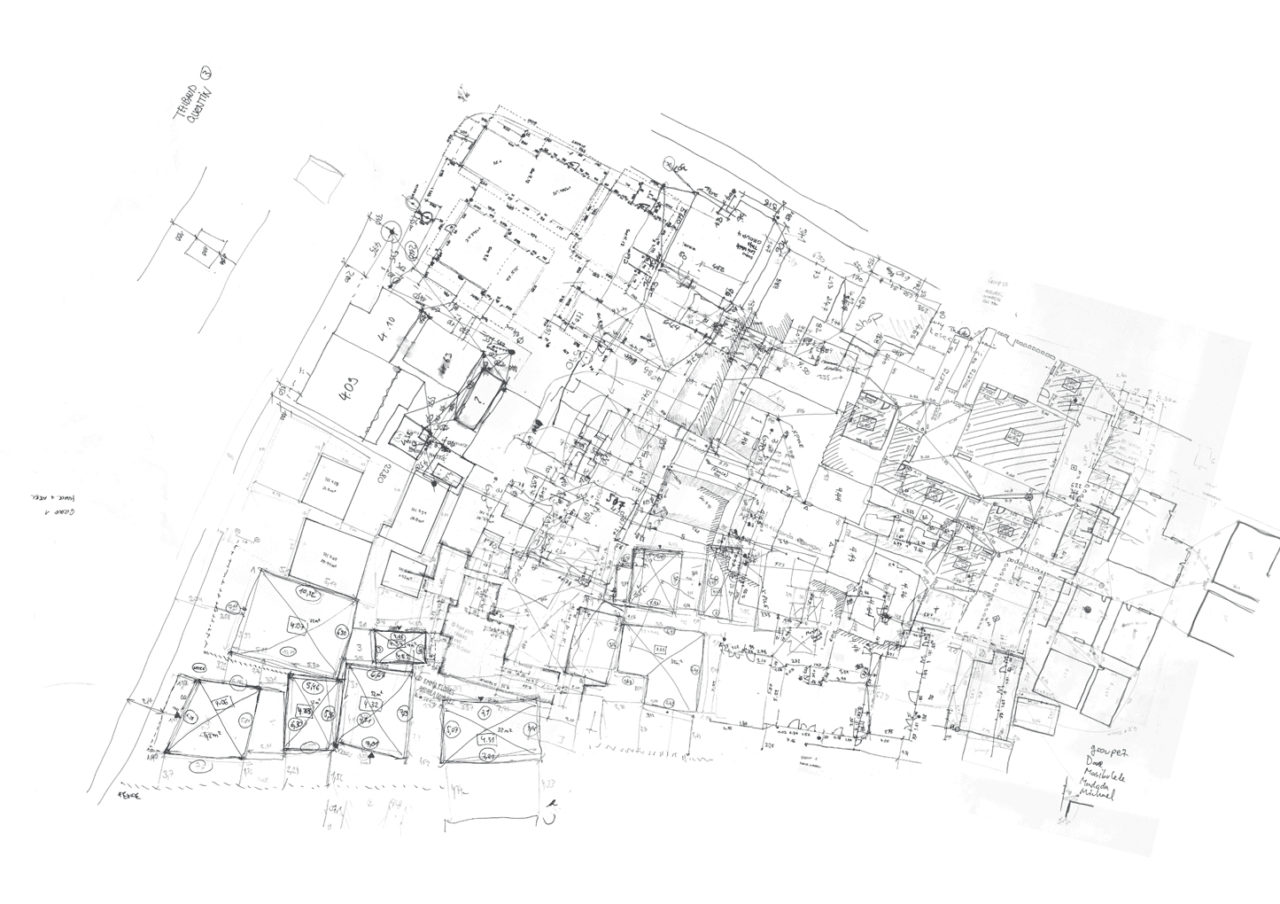
The Urban-Think Tank Chair of Architecture and Urban Design recently launched a two-year design research project in the informal settlements of Cape Town, South Africa, with field surveys, commented walks and the design and facilitation of a series of open workshops. Referencing methods of participation from the Informal Settlement Network (ISN), the team is developing a customized and scalable methodology for the upgrade of a pilot site in BT-Section, Khayelitsha.
The image above is a collation of measured field drawings recorded by community groups and accompanying ETH students during the HS2014 Seminar Week. Each group was tasked to survey an area of the site with the aid of a tape measure, graphite and paper. The shared site analysis had two advantages. Firstly, it offered a set of data for the production of maps, models, simulations, and proposals derived from the social forms of organization of the study space. Secondly, it mobilized the force of collective participation. Mediated skillfully, this can help support community cohesion and strengthen claims to formal recognition and eventually tenure security.
Although protection from eviction is afforded by South Africa’s 1994 constitution, and supported by a taboo on forced removal, development pressure and the constant expansion of informal settlements mean the judicial boundaries of the territory are being negotiated on a daily basis. Self-organization and the use of recognized methods of surveying and enumeration offer a stake in this negotiation and a powerful articulation of citizenry. They also represent a method of resistance to the continued legacy of poor urban management and exclusionary policy that has given rise to the settlements.
In addition, the mapping exercises also provided the base material to articulate the shared ambitions of the community. Specifically, the survey recorded the land currently occupied by each resident in square meters, while also documenting the material construction of each house, the position of openings, common pathways, and shared social and commercial spaces. Investigating further, a hybrid method of recording was developed and undertaken during the Chair’s initial field research into owner-built, two-story houses in 2013. The ‘commented walk’ was a survey conducted as a personal guided tour, during which resident volunteers presented their living spaces, the surrounding social spaces, and the history and methods of housing construction.
Critical practice in design research offers a richer understanding of the complex layers of experience, and real limitations of the built environment, which shape everyday life in informal settlements. This feeds back into the design process as a responsive and creative exercise based on a reading of space drawn deep beyond material surface and form. The South African government has rolled back its 20-year social housing program and is embarking on a ‘paradigm shift’ in relation to informal settlement interventions. In situ, community-driven upgrading has emerged as the only effective tool for responsive engagement. The paradigm shift is also one of responsibility, whereby residents will continue to build the city and redefine its limits outside the formal urban system.
Scott Lloyd manages the Urban-Think Tank Chair of Architecture and Urban Design’s ‘Empower Shack’ project, partnering with Cape Town-based NGO Ikhayalami. The IA and MIS chairs at ETH Zurich are collaborating on methodological and analytic tools, while the project is supported by the Swiss Re Foundation.